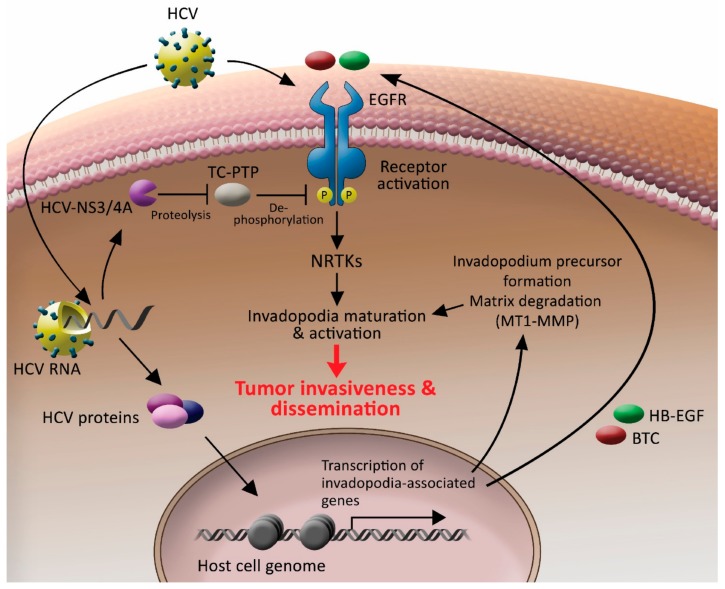Figure 8.
HCV controls invadopodium precursor formation and activation by combining enhancement of gene expression with stimulation of kinase signaling. HCV enters the host cell by using EGFR as a co-receptor. Once the virus is inside the cell, it sustains the activation of the receptor by activating the NS3/4A-TC-PTP axis and sustaining receptor tyrosine phosphorylation. Activated EGFR transmits signals to downstream non-receptor tyrosine kinases and other invadopodia proteins, which leads to the maturation and activation of invadopodium precursors in the host cell. HCV also misregulates chromatin organization and, consequently, transcription of host invadopodia-associated genes. Among the transcribed genes is MT1-MMP, which leads to enhancement of extracellular matrix degradation, and HB-EGF and BTC ligands for EGFR, leading to sustained activation of the receptor in an autocrine loop. A combination of these HCV-induced events leads to invadopodia-dependent tumor cell invasiveness and, consequently, intra and extrahepatic cancer cell dissemination.

